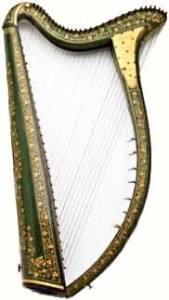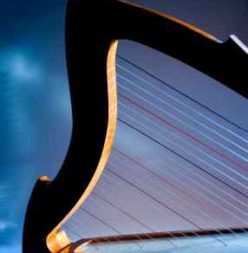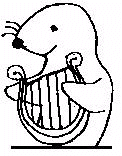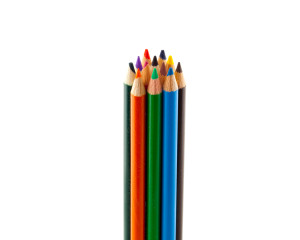 So, you finally know all the notes in that piece you’ve been learning. You can gracefully move from one placing bracket to the next, play both hands together, and smoothly play your way through. But something is still missing. Instead of sounding like Music, your piece sounds somehow rough and unfinished. Why?
So, you finally know all the notes in that piece you’ve been learning. You can gracefully move from one placing bracket to the next, play both hands together, and smoothly play your way through. But something is still missing. Instead of sounding like Music, your piece sounds somehow rough and unfinished. Why?
So far, you’ve approached your practice goals in typical practice fashion: play, rinse, repeat. If you’re smart, and you have a good teacher, you have used strategies like taking out practice spots (instead of always starting at the beginning), analyzing the patterns, looking at the shapes your hands make on the harp, tapping counter rhythms, and so on.
You have enlisted the help of your kinesthetic, visual and auditory senses, using them to teach your body and brain a pretty neat new trick. All this time, your brain has been working overtime. But without your heart, the music will still sound mechanical, however expert. Perhaps you’ve been able to think musically as you learned, which is of course the ideal. Next time you start a piece, see if you can use the tips in the rest of this post to make musical decisions AS you learn the hand positions, notes and rhythms.
Music teachers debate whether or not anyone can teach “musicality”. We can show students how to create dynamics, talk about phrasing, practice articulation, but only the musician can decide how to use these tools. How does the musician decide? With her heart.
I probably can’t teach a student exactly how to bring the music through her heart (and I wouldn’t want to), but I can sure help her open the door to doing that for herself. And isn’t that the whole point of learning to play the harp?
Think back to when you first fell in love with harp music. You heard a harpist ~ at a wedding or concert or simply on a CD ~ and you were entranced. Somehow, since then, you may have forgotten to listen, to breathe, to sink into the music.
Listening to ourselves is really difficult, especially when our brains are concentrating so hard that we literally forget to breathe. Sinking into the music? Wouldn’t that require that I play without thinking?
In some ways, that’s exactly the goal. Think of it as giving your brain a well-deserved vacation.
Teachers often talk about finding a way to make the song yours ~ a cliché suggestion, no doubt, and besides, what does it mean? It means this: you enter the song with your own personal story, your own past, your own feelings. You become present. Once you do that, you will not play the piece in the same way.
Is the piece already “yours”? Have you sung it, not once, but many times? Can you waltz around your house singing the melody of your piece? Can you hear the whole piece in your head?
Can you visualize yourself playing your piece? When you sit at the harp, can you listen for the music and then “catch the stream” and join in, effortlessly?
I guarantee that singing ~ that one, magical key ~ is the fastest way to unlock the heart. Try this experiment. Play one line of your piece, just the way you always do. Now, take a deep breath, hear the line in your head, and sing it as you play it a second time. Do you hear the difference?
If your song has no words, why not make some up? It doesn’t even matter what someone else thinks the song is about—what is it about for you? Make up new words that resonate for you alone.
Why does singing work? Does it matter? For those who want reasons, I’ll give you my theory: whether we are “singers” or not, our voices know how to shape music, just as they know how to shape speech.
Do you think about cadence or phrasing when you talk? Unless you’re a professional speaker, my guess is that you don’t think at all about your voice as you tell a story. You own your words and use inflection, pitch, and a whole host of other tools without even knowing that you know how.
As a harpist, your goal is to be able to use your fingers as your voice. By using your voice while you play, you create a magical bridge between your heart and your fingers that makes this possible.
Singing is the fastest route into the heart of your music, but here are some others. Write a story for your song. Paint a picture, or even a map, that embodies the music for you. Find a photograph that represents your song. Put it on your music stand and look at it while you play. Pick someone you love and play the song for them, whether they can be there physically or not.
Now, you will notice a funny thing if you follow even one of these suggestions. You will fall in love with your music, and with your harp, all over again.
That skeptical voice in you, the one that says “You shouldn’t waste your practice time on all this goofy stuff; you should be working your practice spots and doing your exercises . . .”, is just plain wrong. Why? Because falling in love IS your ticket to the heart of music. Yes, you need your technique, and you need to train your hands, and you need to work on your rhythm. But without the heart of music, none of those things will matter.
Oh, and one last and important thing. Early in this article, I said this: “Listening to ourselves is really difficult, especially when our brains are concentrating so hard that we literally forget to breathe.” The next best thing you can do for your harp playing ~ after singing ~ actually solves this dilemma. Here it is: record yourself.
One of my music mantras goes like this: All Notes are Not Created Equal. As you listen to your recording, put on special ears, not for any notes you may have missed, but for which notes stand out. You will notice that some notes are too shy, and some notes are too bold, or perhaps all the notes are jostling for attention and thus melt into a sea of conformity.
One of my daughter’s piano teachers used to ask her to draw hearts around the juiciest notes ~ the notes that soar at the top of a line, or surprise you out of nowhere, or somehow make your heart just feel happy to hear them. These are the notes that need extra loving as you play.
I’m not going to tell you how to love them; that is up to you. But here’s a hint: all those fabulous musical tools of expression are yours to use, if you let your heart decide.
Find your own heart notes and then play (and record) again, loving those notes as you go. Better yet, sing and play and record again. See what happens.
This post is adapted from material that I originally published in the ezine, Notes from the Harp.




